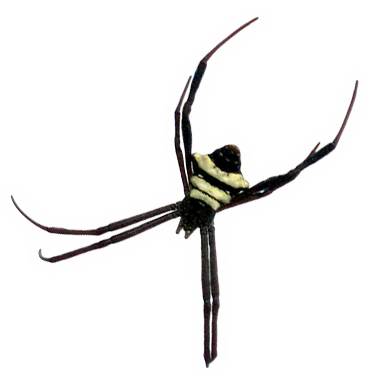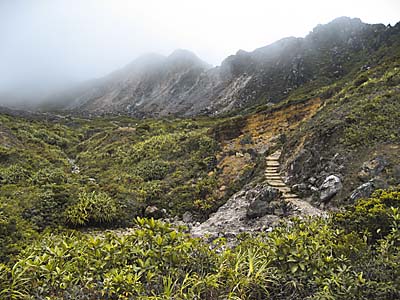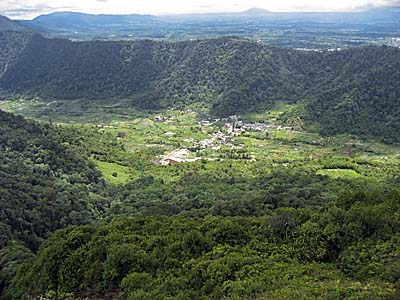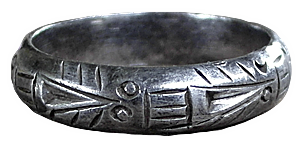1.
Berastagi Town / North Sumatra
The Batak Karo town of Berastagi (rather: Brastagi, also spoken so) is a small place in the mountainous Batak Karo Highlands, north Sumatra. Situated inmiddle of the Barisan Mountain Chain with two impressing volcanoes in the neighbourhood, the place is attractive because of it's altitude of around 1,300m above sea level, what makes a nice, cool climate.
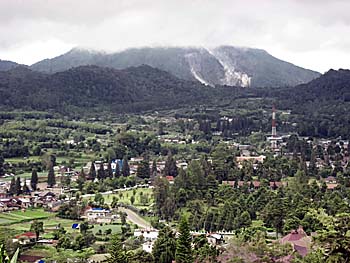
Berastagi, with the landscape dominating Gunung Sibayak behind. Image by Asienreisender, 2009
Coming from bustling and brutally hot Medan it's a real relief, and moreover the local guides are not that ambitious as they are in Bukit Lawang. However, still bad enough. The town's population consists mostly of Batak Karo People. The majority here are christians, a result of the missionary efforts of Ludwig Ingwer Nommensen and his successors in the 19th century. Nevertheless, there is a considerable muslim population living in and around Berastai as well. So, one won't miss here the mosques with their loudspeaker announcements.
Berastagi is roughly 66km away from Medan and about 50km from Lake Toba. One shouldn't forget the road conditions in Sumatra when considering distances here - 50km can be a long, long trip on a totally rotten, incredibly overcrowded and crammed full bus on roads who remind to the surface of the moon. Last time I made the trip I preferred to sit on the bus roof; however, here and there came a 'police warning', and everybody on the roof had to leave it and to crowd into the vehicle. Traffic police would make extra money out of it - it's officially not allowed to sit on the roof, although widely common.
Famous Bukit Lawang lies further northwest of Berastagi. It's not possible to go directly from here to there. To reach Bukit Lawang, one has to make the detour via Medan again. The next traffic-knot is in Kabanjahe, 11km south of Berastagi. There is the hub for several directions further into north Sumatra.
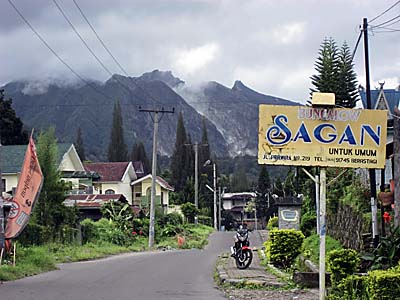
The outskirts of Berastagi, on the way up to Gunung Sibayak. Image by Asienreisender, 2009
The moderate climate was the reason for the Dutch colonial authorities in the 1920s to establish a hill station here for the colonial officers and the Dutch farmers in north Sumatra. Nowadays it's a holiday destination for people from Medan, and many wealthy Medan residents maintain a weekend- or holiday residence in Berastagi.
The town itself is a small spot consisting mostly of the main road which connects Medan and Kabanjahe. There is practically nothing of interest in Berastagi itself. A couple of sideroads give very poor impressions - it all looks slumlike, poor, dirty and ugly. If you like that, don't miss the fresh market. It's one of the dirtiest I saw in Southeast Asia, and I saw a lot. Chaos, crowd, rubbish everywhere, dead rats on the road with plenty of blowflies on them, the stench of rotten meat and fish... A walk through the market might spare you dinner - you save money and keep slim, that's great. Beer and alcohol in general is anyway far too expensive in this muslim country, so live is really healthy here.
One of the inner-town highlights is Gundaling Park, on a green hill nearby the town's center, equipped with a number of restaurants and more guesthouses. Near the market is the 'Combat Memorial' (Tugu Perjuangan), in memory of the 'Batak Wars' in the late 19th and early 20th century. At the other end of the main road is a 'Cabbage Monument' placed.
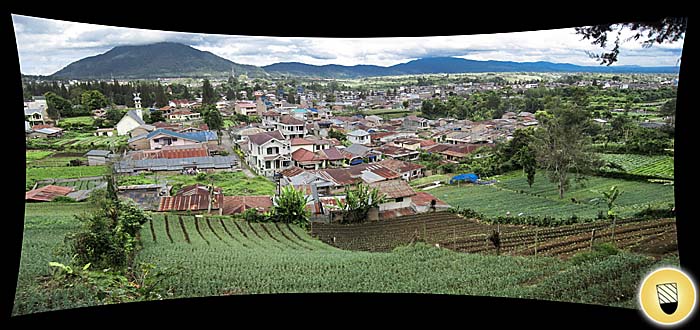
Berastagi (Brastagi), seen from the way up to Gundaling Park.
Image by Asienreisender, 2009
Many of the guesthouses have a poor price-performance ratio - old or run-down, a bit dirty, but not cheap. The Indonesians from Medan come in groups and sleep not seldom with eight or more people in a double room, means four or five occupy the beds and the rest sleeps on the ground. They don't mind and since they anyhow share the price it's no more that expensive per head.
The local agriculture is coined not so much by rice cultivation, but by crops who don't grow in the hot, tropical climate of the plains. Among them are cauliflower, radish, potatoes, peas, beans, cabbage, tomatoes, carrots and some more. Berastagi is famous for the production of passionfruit.
Map of Berastagi
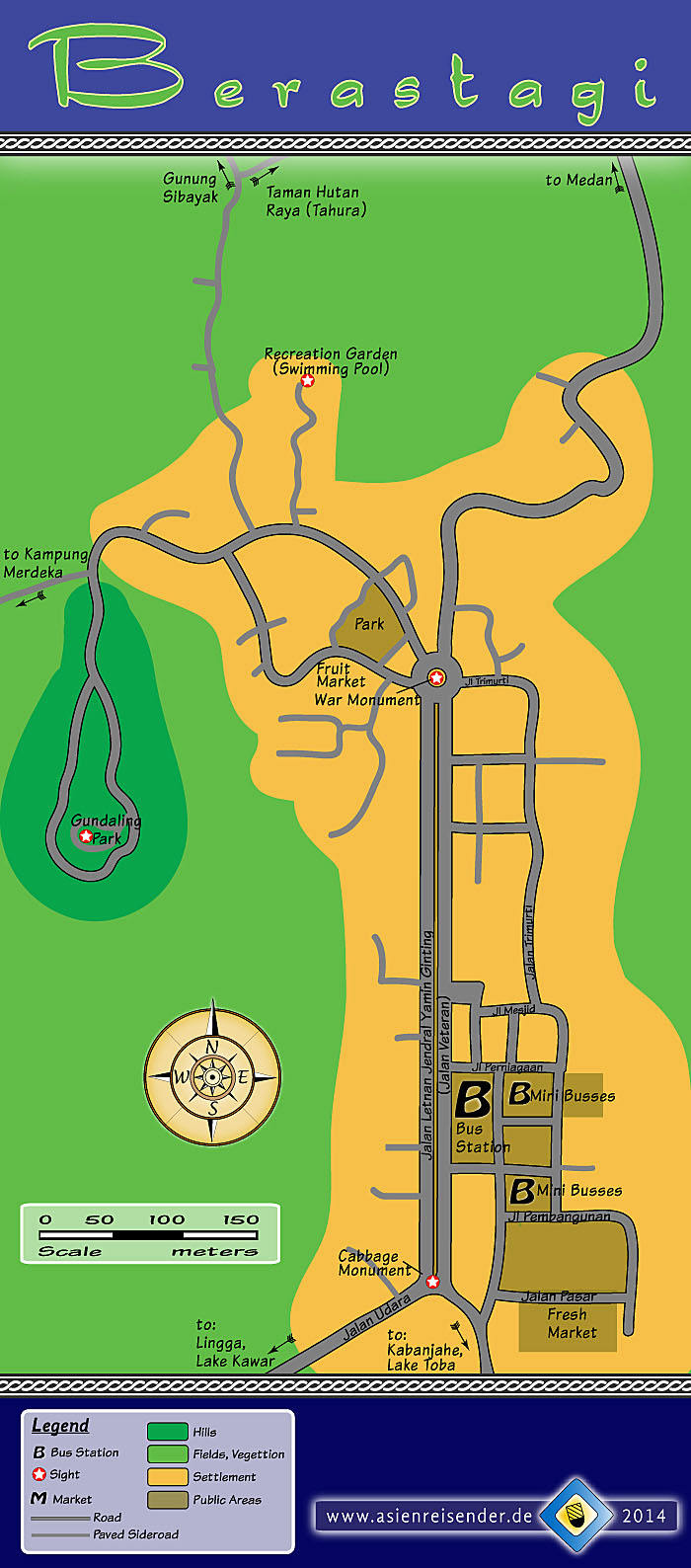
A map of Berastagi. The small place is easily to explore within a few hours. Like practically almost all the towns in Sumatra it's rather dirty and not particularly nice here. However, at least the outskirts give a much better impression.
The fact that the main road is aligned straight as a north-south axis indicates that it was first built by the Dutch colonial administration.
